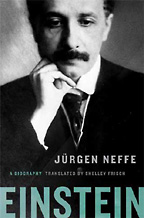A Myth of Gaussian Proportions
 Sunday, June 3, 2007
Sunday, June 3, 2007  When I was a freshman in high school, my home room teacher gave us a very nasty assignment during an after-school detention session - to calculate 35 to the 35th power!
When I was a freshman in high school, my home room teacher gave us a very nasty assignment during an after-school detention session - to calculate 35 to the 35th power!
This assignment was particularly cruel and unusual punishment because there were no such things as calculators back in 1967.
What I really needed was something I didn't know about until college: a closed-form solution.
Finding closed form expressions for partial sums is a standard calculus exercise. The ur-example of this type of problem is the sum of the first n integers, which is easily shown to be n(n+1)/2.
This closed form expression collapses (n-1) operations into three. Because it yields an exact answer, it is not really a predictor, but, in a sense, it is a model of a process.
When this example is done in a calculus class, a typical accompanying story is how young Gauss solved this problem in record time, totally showing up the teacher who had given out the onerous task of adding the first 100 integers. (The version I always heard was that this was a punishment because the students had been particularly noisy that day. The sadistic mathematical punishments of my high school teacher certainly lends credence to this tale.)












